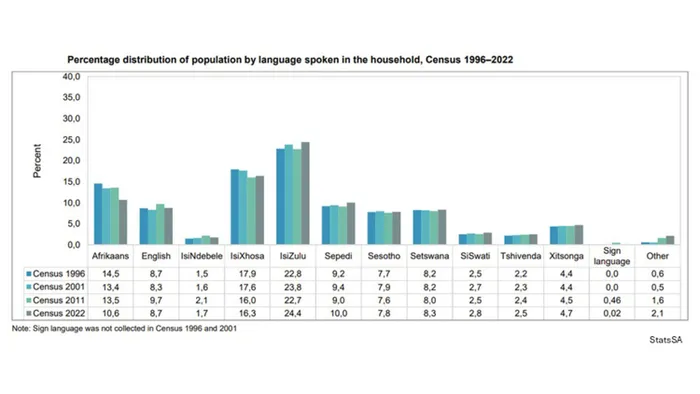What keeps Afrikaans television thriving in South Africa?

According to recent data from Statistics South Africa, Afrikaans television continues to enjoy strong popularity across the country.
Image: Facebook/Binnelanders
According to recent data from Statistics South Africa, Afrikaans television continues to enjoy strong popularity across the country.
The latest census thematic report on cultural dynamics, which analyses language trends from 1996 to 2022, shows that Afrikaans remains the third most spoken language in South Africa, despite a gradual decline over the years.
In 2022, Afrikaans was spoken by 10.6% of the population, down from 14.5% in 1996. The most significant drop happened between 2011 and 2022, when the share of Afrikaans speakers fell from 13.5% to 10.6%.
Nevertheless, Afrikaans is still dominant in certain regions and population groups, which helps sustain demand for Afrikaans media, including television, said Statistics South Africa.
Provincially, Afrikaans is the primary language for 54.6% of residents in the Northern Cape, showing strong regional concentration. Furthermore, within the coloured population group, over 70% speak Afrikaans, although this proportion has decreased by around 10 percentage points over the past 26 years. Among the white population, 58% speak Afrikaans, with English speakers accounting for 41.1%, according to Statistics South Africa data.

Percentage distribution of TV viewers by language.
Image: StatsSA
This linguistic and cultural base supports a consistent audience for Afrikaans TV programming. KykNET, a DStv channel specialising in Afrikaans content, has a strong and loyal following, according to the Broadcast Research Council.
Popular shows such as Boer Soek ’n Vrou consistently draw significant audience shares, while the soap opera Binnelanders recently celebrated its 3000th episode, underscoring the channel’s lasting appeal.
According to the Broadcast Research Council’s most recent data, 4.2 million Coloured South Africans held TV licences, reflecting a substantial potential viewership for Afrikaans programming. The council’s latest survey also noted a notable growth in the Afrikaans/Two languages group of 4.87% increase, indicating a rising bilingual audience that contributes further to Afrikaans TV’s reach.
Afrikaans media’s relevance remains anchored by the size and loyalty of its core audience, making Afrikaans TV a continuing staple of South African broadcast culture.
IOL